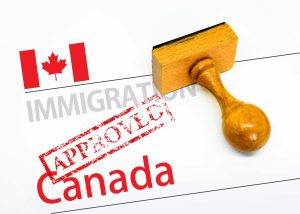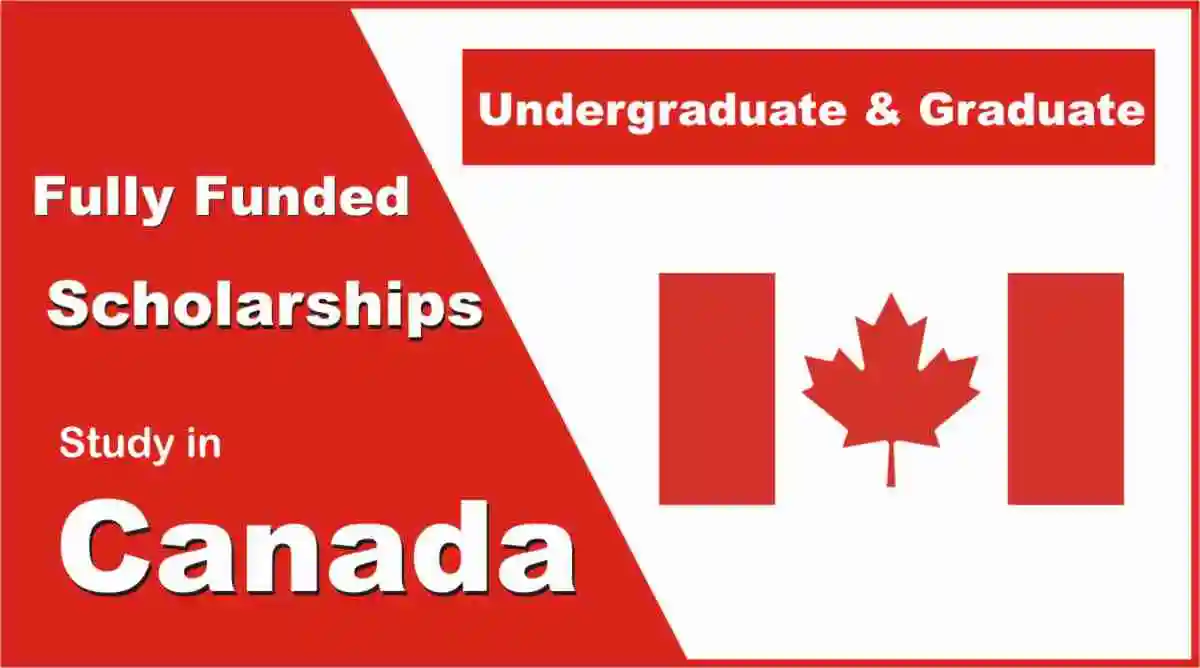Advertisements
Immigrating to Canada without a degree is an achievable goal, with numerous pathways available to individuals with diverse skill sets and backgrounds. While having a degree can be advantageous, Canada welcomes individuals from all walks of life, including those with semi-skilled and trade backgrounds. Immigration data underscores Canada’s appreciation for a wide range of skill sets, offering opportunities for those without formal education to build a new life there.
Advertisements
Canada provides numerous immigration options regardless of your educational background, and finding the right opportunity is key. It’s entirely feasible to immigrate to Canada without a degree, with programs tailored specifically for individuals in this situation.
How to Immigrate to Canada Without a Degree
If you’re contemplating a move to Canada for work without holding a degree, here’s a step-by-step guide to help you realize that dream:
Step 1: Determine if You Need a Work Permit
Not all jobs in Canada require a work permit, so it’s essential to ascertain whether your desired position necessitates one. Seek guidance if you’re unsure, and if a work permit is required, you can apply through the International Mobility Program (IMP) or the Temporary Foreign Worker Program (TFWP).
Step 2: Prepare an Updated Resume
Crafting a polished, updated resume is pivotal in your immigration journey. Emphasize your relevant skills and experience, highlighting those pertinent to your desired job. Since you lack a degree, focus on showcasing skills relevant to the job market and ensure your resume follows Canadian formatting standards.
Step 3: Start Searching for Canadian Jobs
Once your resume is ready, begin scouring Canadian job opportunities that match your skill set and experience. Utilize online portals such as Career Builder and Canada Job Bank, or explore the official Job Bank of Canada for openings. Preparation for Canadian job interviews is also advisable.
Step 4: Initiate Your Application
Take proactive steps by promptly submitting your immigration applications to Canada. If you need assistance at any stage, platforms like Careerinfos.com can provide support and help you identify the visa program best suited to your qualifications.
Choosing Your Immigration Route to Canada Without a Degree
As you embark on your immigration journey, explore the various available options aligned with your qualifications, skills, and aspirations:
1. The Express Entry System
The Express Entry System is Canada’s flagship immigration management system, designed to expedite the processing of skilled foreign worker applications for permanent residency. It operates under three main federal economic immigration programs:
- Federal Skilled Worker Program (FSWP): This program is for skilled workers with foreign work experience who intend to immigrate to Canada permanently. To qualify, applicants must meet minimum requirements for work experience, language proficiency, and education. While having a degree is advantageous, it’s not mandatory, as points are allocated based on a comprehensive ranking system (CRS) that considers various factors such as age, work experience, language proficiency, and adaptability.
- Federal Skilled Trades Program (FSTP): This program is for skilled tradespeople who have work experience in certain eligible skilled trade occupations and want to immigrate to Canada permanently. Like the FSWP, a degree is not required, but applicants must meet specific requirements related to work experience, language proficiency, and job offers in Canada.
- Canadian Experience Class (CEC): This program is for individuals who have gained skilled work experience in Canada on a temporary work permit and wish to transition to permanent residency. Again, while having a degree can be beneficial, it’s not mandatory. Applicants must meet specific requirements related to work experience, language proficiency, and legal status in Canada.
Applicants interested in any of these programs create an online profile in the Express Entry system, providing details about their education, work experience, language proficiency, and other factors. Based on the information provided, applicants are assigned a Comprehensive Ranking System (CRS) score. Periodically, the Canadian government conducts draws from the Express Entry pool, inviting candidates with the highest CRS scores to apply for permanent residency.
In summary, while having a degree can enhance an applicant’s CRS score, it’s not a strict requirement for the Express Entry system. Skilled workers with significant work experience, strong language skills, and other qualifying factors can still be eligible for permanent residency in Canada through Express Entry.
2. Provincial Nominee Programs (PNPs)
Provincial Nominee Programs (PNPs) are immigration programs operated by individual provinces and territories in Canada. These programs allow provinces and territories to nominate individuals who have the skills, education, and work experience required to contribute to the local economy and fill labor market gaps. PNPs are an essential component of Canada’s immigration system, as they enable provinces and territories to select immigrants who meet their specific economic and demographic needs.
Here’s an overview of how PNPs typically work:
- Eligibility Criteria: Each province and territory sets its own eligibility criteria for its PNP streams. These criteria may vary depending on factors such as occupation, education, work experience, language proficiency, and ties to the province or territory.
- Stream Selection: Provinces and territories operate different streams under their PNPs, targeting various categories of applicants. Common streams include skilled worker streams, international graduate streams, entrepreneur streams, and semi-skilled worker streams.
- Nomination Process: Eligible candidates interested in immigrating to a particular province or territory through its PNP must first submit an Expression of Interest (EOI) or apply directly to the province or territory, depending on the specific program requirements. If selected, candidates receive a provincial nomination, which provides them with additional points under the federal Express Entry system or a direct route to permanent residency, depending on the program.
- Application for Permanent Residence: After receiving a provincial nomination, candidates must apply for permanent residence to the federal government through Immigration, Refugees and Citizenship Canada (IRCC). They must meet all federal eligibility criteria, including security, medical, and admissibility requirements.
- Processing Times and Fees: Processing times and application fees vary depending on the specific PNP stream and the province or territory. Candidates should consult the official website of the province or territory they are interested in for detailed information on processing times, fees, and application procedures.
- Employer Sponsorship: Some PNPs require candidates to have a job offer from a local employer in the province or territory. In such cases, the employer may need to obtain a Labour Market Impact Assessment (LMIA) or demonstrate that they have made efforts to hire a Canadian citizen or permanent resident before offering the job to a foreign worker.
Overall, PNPs provide provinces and territories with the flexibility to address their unique economic and demographic needs by selecting immigrants who can contribute to their local communities. These programs complement the federal immigration system and play a vital role in Canada’s overall immigration strategy.
3. The Atlantic Immigration Pilot (AIP)
The Atlantic Immigration Pilot (AIP) is a unique immigration program designed to address labor market needs and population challenges in Canada’s Atlantic provinces: Nova Scotia, New Brunswick, Prince Edward Island, and Newfoundland and Labrador. Launched in 2017, the AIP aims to attract and retain skilled workers and international graduates to the Atlantic region by offering them pathways to permanent residency.
Here are the key features of the Atlantic Immigration Pilot program:
- Employer-Driven: One of the distinctive aspects of the AIP is its employer-driven approach. Employers in the Atlantic provinces play a central role in the program by actively recruiting and supporting skilled foreign workers and international graduates for job vacancies that they have been unable to fill locally.
- Three Immigration Streams: The AIP comprises three main immigration streams:
- Atlantic High-Skilled Program: Targets individuals with management, professional, or technical/skilled trades experience. Candidates must have a job offer from an employer in one of the Atlantic provinces.
- Atlantic Intermediate-Skilled Program: Targets individuals with experience in intermediate-skilled occupations. Candidates must have a job offer from an employer in one of the Atlantic provinces.
- Atlantic International Graduate Program: Targets international graduates from eligible post-secondary institutions in the Atlantic provinces. Candidates must have a job offer from an employer in one of the Atlantic provinces.
- Employer Designation: Employers in the Atlantic provinces must be designated by the respective provincial government to participate in the AIP. Once designated, they can hire foreign workers or international graduates through the program.
- Endorsement by Provincial Government: Candidates under the AIP must be endorsed by the provincial government of the Atlantic province where they will be working. This endorsement confirms that the candidate meets the eligibility criteria for the program.
- Pathway to Permanent Residency: Once endorsed, candidates and their families can apply for permanent residency in Canada through the AIP. They must meet all federal eligibility criteria for permanent residency, including health, security, and admissibility requirements.
- Support Services: The AIP offers support services to both employers and candidates to facilitate the immigration process. These services may include assistance with recruitment, settlement, and integration into the local community.
The Atlantic Immigration Pilot program has been successful in attracting skilled workers and international graduates to the Atlantic region, addressing labor market needs, and contributing to the region’s economic growth and vitality. It offers a streamlined pathway to permanent residency for eligible candidates who are willing to live and work in one of Canada’s Atlantic provinces.
4. The Rural and Northern Immigration Pilot (RNIP)
The Rural and Northern Immigration Pilot (RNIP) is a Canadian immigration program aimed at addressing labor market shortages and population decline in rural and northern communities across Canada. Launched in 2019, the RNIP offers a pathway to permanent residency for skilled foreign workers who wish to settle in participating communities.
Key features of the Rural and Northern Immigration Pilot program include:
- Community-Driven Approach: The RNIP is community-driven, meaning that participating communities play a central role in the selection of candidates. Each participating community has its own set of eligibility criteria and specific labor market needs, which they use to assess and nominate candidates for permanent residency.
- Participating Communities: As of its launch, the RNIP includes 11 participating communities across Canada, spread across provinces such as Ontario, Manitoba, Saskatchewan, Alberta, and British Columbia. These communities were selected based on their demonstrated need for skilled workers and their capacity to support newcomers.
- Job Offer Requirement: To be eligible for the RNIP, candidates must have a valid job offer from an employer in one of the participating communities. The job offer must be for a permanent, full-time position and meet the requirements set out by the community’s immigration program.
- Community Endorsement: Candidates who receive a job offer from a participating community must apply for endorsement by that community. The community will assess the candidate’s eligibility based on their criteria and issue a recommendation for permanent residency if the candidate meets their requirements.
- Federal Immigration Requirements: In addition to meeting the requirements of the participating community, candidates must also meet the federal immigration requirements for permanent residency in Canada. This includes factors such as language proficiency, education, work experience, and admissibility.
- Pathway to Permanent Residency: Once endorsed by a participating community and approved by Immigration, Refugees and Citizenship Canada (IRCC), candidates can apply for permanent residency in Canada. Successful applicants and their families will receive permanent resident status and can live and work anywhere in Canada.
The Rural and Northern Immigration Pilot program aims to attract skilled workers to rural and northern communities, helping to address labor shortages, stimulate economic growth, and support the long-term sustainability of these communities. It offers a valuable opportunity for skilled foreign workers who are interested in living and working in smaller Canadian communities to obtain permanent residency in Canada.
5. The Agri-Food Pilot (AIP)
The Agri-Food Pilot (AFP) is a Canadian immigration program specifically tailored to address labor shortages in the agri-food sector. Launched in May 2020, the AFP aims to attract experienced, non-seasonal workers to Canada’s agriculture and agri-food industry, which plays a crucial role in the country’s economy.
Here are the key features of the Agri-Food Pilot program:
- Targeted Sector: The AFP is designed to address labor shortages in specific occupations within the agri-food sector, including meat processing, mushroom production, greenhouse crop production, and livestock raising. These industries are essential to Canada’s food supply chain and require skilled workers to maintain productivity and competitiveness.
- Eligible Occupations: The AFP targets occupations classified under the National Occupational Classification (NOC) codes 0 (management occupations), A (professional occupations), and B (technical and skilled trades occupations). Examples of eligible occupations include farm supervisors and specialized livestock workers, food processing supervisors, and industrial butchers.
- Work Experience Requirement: To be eligible for the AFP, candidates must have at least one year of full-time, non-seasonal work experience in an eligible occupation within the past three years. This work experience must be acquired legally, either in Canada or abroad.
- Education Requirement: While having a formal education is not mandatory for the AFP, candidates must have at least a Canadian high school diploma or its equivalent. Educational credentials may enhance an applicant’s profile but are not the primary focus of the program.
- Language Proficiency: Candidates must demonstrate proficiency in either English or French, as determined by standardized language tests recognized by Immigration, Refugees and Citizenship Canada (IRCC). Language proficiency is assessed in the four key areas: speaking, listening, reading, and writing.
- Job Offer Requirement: Applicants must have a valid job offer for a full-time, non-seasonal position in an eligible occupation from a Canadian employer in the agri-food sector. The job offer must meet certain criteria set out by the AFP, including wage requirements and adherence to labor standards.
- Pathway to Permanent Residency: Successful applicants and their immediate family members will be granted work permits and can move to Canada to work in their designated occupation. After meeting the requirements of the AFP and obtaining work experience in Canada, candidates may be eligible to apply for permanent residency through existing immigration streams.
The Agri-Food Pilot program is a strategic initiative aimed at supporting the growth and sustainability of Canada’s agri-food sector by addressing critical labor shortages. It provides opportunities for skilled workers from around the world to contribute their expertise to this vital industry while also offering a pathway to permanent residency in Canada.
The Home Care Provider Pilots
The Home Care Provider Pilots are Canadian immigration programs designed to address labor shortages in the home care sector, specifically targeting home childcare providers and home support workers. Launched to support the growing demand for caregivers in Canada, these pilots offer pathways for eligible individuals to obtain work permits and eventually apply for permanent residency.
Here are the key features of the Home Care Provider Pilots:
- Two Pilots: There are two distinct Home Care Provider Pilots: one for home childcare providers and another for home support workers. Each pilot is tailored to address the specific needs and requirements of its respective sector.
- Eligible Occupations: The pilots target occupations related to home care, including:
- Home Childcare Provider Pilot: This pilot is aimed at individuals who provide childcare services within private homes. Eligible occupations may include nanny, au pair, or live-in caregiver for children.
- Home Support Worker Pilot: This pilot targets individuals who provide non-medical care and support services to elderly or disabled individuals within private homes. Eligible occupations may include personal support worker, home care aide, or caregiver for the elderly or disabled.
- Work Experience Requirement: To be eligible for the pilots, candidates must have at least two years of full-time work experience (or equivalent part-time experience) in the respective occupation within the past three years. This work experience must be acquired legally, either in Canada or abroad.
- Education Requirement: While formal education is not mandatory for the pilots, candidates must have at least a Canadian high school diploma or its equivalent. Educational credentials may enhance an applicant’s profile but are not the primary focus of the programs.
- Language Proficiency: Candidates must demonstrate proficiency in either English or French, as determined by standardized language tests recognized by Immigration, Refugees and Citizenship Canada (IRCC). Language proficiency is assessed in the four key areas: speaking, listening, reading, and writing.
- Job Offer Requirement: Applicants must have a valid job offer from a Canadian employer in the respective occupation. The job offer must meet certain criteria set out by the pilots, including wage requirements and adherence to labor standards.
- Pathway to Permanent Residency: Successful applicants and their immediate family members will be granted work permits and can move to Canada to work in their designated occupation. After meeting the requirements of the pilots and obtaining work experience in Canada, candidates may be eligible to apply for permanent residency through existing immigration streams.
The Home Care Provider Pilots provide opportunities for skilled caregivers from around the world to contribute their expertise to the Canadian home care sector while also offering a pathway to permanent residency in Canada. These pilots play a crucial role in addressing labor shortages and meeting the growing demand for home care services in the country.
Understanding Skill Levels in Canada
Understanding skill levels in Canada is essential for immigrants seeking employment and navigating the Canadian labor market. In Canada, skill levels are classified according to the National Occupational Classification (NOC) system, which categorizes occupations based on skill type and skill level. The skill level of an occupation is determined by the level of education, training, and experience required to perform the job effectively.
Here’s an overview of the skill levels in Canada:
- NOC Skill Levels: The National Occupational Classification (NOC) system categorizes occupations into skill levels ranging from 0 to 5:
- Skill Level 0 (Zero): Occupations classified at NOC Skill Level 0 typically require management, professional, or senior technical expertise. Examples include managers, senior officials, and executives.
- Skill Level A: Occupations classified at NOC Skill Level A typically require a university degree or extensive training and experience. Examples include doctors, engineers, and lawyers.
- Skill Level B: Occupations classified at NOC Skill Level B typically require college education or apprenticeship training. Examples include tradespeople, technicians, and administrative support staff.
- Skill Level C: Occupations classified at NOC Skill Level C typically require high school education and/or job-specific training. Examples include clerical workers, customer service representatives, and salespersons.
- Skill Level D: Occupations classified at NOC Skill Level D typically require on-the-job training or short courses. Examples include laborers, cleaners, and kitchen helpers.
- Qualifications and Requirements: The skill level of an occupation determines the level of education, training, and experience typically required for employment in that field. Higher skill levels generally correspond to higher educational and experience requirements.
- Immigration and Work Opportunities: Canadian immigration programs and work opportunities may prioritize certain skill levels based on labor market needs and economic priorities. Skilled workers in NOC Skill Level 0, A, and B occupations often have more immigration options and pathways to permanent residency in Canada.
- Recognition of Foreign Credentials: Understanding the skill level of your occupation is crucial for immigrants seeking to have their foreign credentials recognized in Canada. Some occupations may require additional education, training, or certification to meet Canadian standards and licensing requirements.
- Job Search and Employment: Job seekers can use the NOC system to identify occupations that match their skills, education, and experience. Understanding the skill level of different occupations can help individuals target their job search and identify employment opportunities that align with their qualifications.
Overall, understanding skill levels in Canada is essential for immigrants navigating the Canadian labor market, seeking employment opportunities, and planning their career paths in the country. The NOC system provides a standardized framework for classifying occupations based on skill type and level, helping individuals make informed decisions about their education, training, and employment prospects.
Exploring High-Paying Jobs in Canada Without a Degree
Certainly! In Canada, there are several high-paying jobs that don’t necessarily require a university degree. Many of these positions offer competitive salaries and opportunities for career advancement. Here are some examples:
- Skilled Trades: Various skilled trades in Canada offer lucrative career paths. These include roles such as electricians, plumbers, HVAC technicians, carpenters, and welders. Skilled tradespeople often undergo apprenticeship training or technical programs, gaining practical experience and specialized skills that are in high demand.
- Transportation: Jobs in the transportation sector, such as truck drivers, train conductors, and airline pilots, can offer substantial salaries. While some positions may require specific certifications or licenses, they often provide opportunities for on-the-job training and advancement.
- Mining and Resource Extraction: Canada’s mining and resource extraction industries offer well-paying jobs, including roles such as mining machine operators, heavy equipment operators, and drillers. These positions often involve working in remote areas and require specialized training and safety certifications.
- Construction Management: Construction managers oversee building projects from planning to completion, ensuring that they are completed on time and within budget. While a degree in construction management or a related field can be beneficial, many construction managers rise through the ranks with experience gained from working in the construction industry.
- Real Estate: Real estate agents and brokers can earn high commissions by helping clients buy, sell, or rent properties. While formal education and licensing requirements vary by province, success in this field often depends on networking, sales skills, and industry knowledge.
- Sales Representatives: Sales representatives in industries such as pharmaceuticals, wholesale trade, and technical services can earn substantial salaries through commissions and bonuses. Strong communication skills, negotiation abilities, and product knowledge are essential for success in sales roles.
- Utilities and Power Generation: Jobs in utilities and power generation, such as power plant operators, electricians, and utility workers, offer competitive wages and opportunities for career advancement. These positions often require specialized training and certifications in electrical systems and safety protocols.
- Information Technology (IT): While many IT roles require a degree, there are opportunities for self-taught individuals or those with industry certifications to enter the field. Roles such as network administrator, systems analyst, and computer support specialist can offer high salaries and opportunities for growth in Canada’s technology sector.
These are just a few examples of high-paying jobs in Canada that don’t necessarily require a university degree. It’s essential for individuals to research specific industries and occupations to identify opportunities that match their skills, interests, and career goals. Additionally, gaining relevant experience, certifications, and training can enhance job prospects and earning potential in these fields.
Jobs That Require No Degrees in Canada
In Canada, there are numerous jobs that do not require a university degree but still offer competitive salaries and opportunities for career advancement. These roles often prioritize practical skills, specialized training, and hands-on experience. Here are some examples of jobs that typically do not require a degree:
- Tradespeople: Skilled trades such as electricians, plumbers, carpenters, HVAC technicians, welders, and automotive technicians are in high demand in Canada. These roles often involve apprenticeship training or vocational programs to gain specialized skills and certifications.
- Construction Workers: Construction laborers, heavy equipment operators, and concrete finishers are essential to building projects in Canada. While formal education is not always required, on-the-job training and experience are valuable for advancing in these roles.
- Truck Drivers: Long-haul truck drivers, delivery drivers, and commercial drivers play a crucial role in transporting goods across Canada. Obtaining a commercial driver’s license (CDL) and completing training programs are typically required for these positions.
- Manufacturing Workers: Jobs in manufacturing, such as assembly line workers, machine operators, and quality control inspectors, offer opportunities for individuals without degrees. Many of these roles provide on-the-job training and advancement pathways within the industry.
- Retail and Sales: Retail salespersons, customer service representatives, and sales associates work in various industries, including retail stores, automotive dealerships, and telecommunications companies. These roles often prioritize communication skills, sales experience, and product knowledge.
- Hospitality and Food Service: Jobs in the hospitality and food service industry, such as cooks, servers, bartenders, and hotel staff, provide entry-level opportunities for individuals without degrees. While formal training may be beneficial, many positions offer on-the-job training and advancement opportunities.
- Security Guards and Protective Services: Security guards, loss prevention officers, and security personnel play a critical role in maintaining safety and security in various settings, including malls, airports, and office buildings. Training and licensing requirements vary by province and employer.
- Home Health Care: Home support workers, personal care aides, and home childcare providers assist individuals with daily activities and care needs in private residences. While formal education and certification may be required for some positions, relevant experience and training are often prioritized.
- Cleaning and Maintenance: Janitors, cleaners, and maintenance workers are essential for maintaining cleanliness and functionality in various facilities, including offices, schools, and hospitals. These roles often require attention to detail and physical stamina.
- Landscaping and Groundskeeping: Landscapers, groundskeepers, and gardeners maintain outdoor spaces, including parks, golf courses, and residential properties. While formal education is not always required, knowledge of horticulture and landscaping techniques can be beneficial.
These are just a few examples of jobs that do not require a university degree in Canada. Individuals interested in pursuing these careers can explore training programs, apprenticeships, and entry-level positions to gain relevant experience and advance in their chosen fields.
While migrating to Canada without formal qualifications may pose challenges, the nation boasts inclusive and progressive immigration policies. Canada places a high value on diversity and recognizes the potential of individuals eager to make meaningful contributions to society. While possessing credentials can certainly bolster one’s prospects, Canada offers pathways for those without formal qualifications to embark on a fresh start.
Canada’s immigration strategy is centered around attracting skilled workers who can enrich the economy and address gaps in the labor market. However, the Canadian immigration system acknowledges that qualifications alone do not define an individual’s potential. Instead, they evaluate applicants based on a range of factors, including work experience, language proficiency, adaptability, and a willingness to learn. Demonstrating a commitment to building a life in Canada can significantly enhance one’s likelihood of acceptance.
FAQs Regarding Immigrating to Canada Without a Degree
- Is Employment Available Without a Degree in Canada?
- Indeed, individuals lacking a degree may still be eligible for a work permit in Canada. Although numerous professional occupations in Canada typically mandate a bachelor’s degree, applicants must exhibit the requisite skills, training, education, and language proficiency to fulfill job criteria.
- Can I Utilize My Diploma for Employment in Canada?
- Absolutely, upon completing a certificate, diploma, or degree program lasting at least eight months in Canada, you can acquire a Post-Graduation Work Permit (PGWP). This permit enables you to remain in Canada and work full-time, even in fields unrelated to your area of study.
- Can Non-Citizens Work in Canada Without a Degree?
- Certainly, Canada consistently necessitates skilled labor, and its labor market encounters shortages not owing to a dearth of job opportunities but rather a deficiency of locally skilled workers. Numerous lucrative skilled positions in Canada do not mandate a degree.





